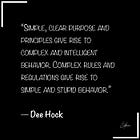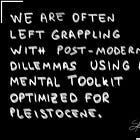Atomic Knowledge #7: Mental Accounting
Recognizing money as neutral is key to making rational, goal-aligned choices.
Mental accounting describes how individuals subjectively value money and resources, often contradicting basic economic principles. Introduced by Thaler, Kahneman and Tversky during their work on behavioral economics, it reveals how people mentally compartmentalize finances into categories based on the source, purpose, or emotions tied to their use. These labels violate the principle of fungibility, which treats money as inherently interchangeable. Mental accounting has three components: how money are allocated, how transactions are experienced and perceived and how choices are temporally framed and grouped together. For instance, lottery winnings might be spent impulsively on luxuries, while savings are handled cautiously; a bonus is often seen as "fun money," while regular income covers essentials; and a purchase is more likely to be made if it can be assigned to an account that is not already in the red. Mental accounting can help enforce budgeting, but it can also lead to flawed decisions—like prioritizing short-term indulgences over long-term goals. Money itself is neutral, but our perception of it isn’t. By recognizing money as fungible, we can break free from these biases and make smarter, more goal-aligned choices.
Make the most of it! Until next time, S.
Deepen Your Knowledge
Investopedia (article)
Wikipedia (article)
Behavioral Economics (article)
Richard H. Thaler, “Mental Accounting Matters”, Journal of Behavioral Decision Making, Vol. 12, Iss. No. 3, 183-206, 1999 (paper)
Emmanuel Marques Silva, Rafael de Lacerda Moreira, Patricia Maria Bortolon, “Mental Accounting and decision making: a systematic literature review”, Journal of Behavioral and Experimental Economics, Volume 107, 2023, 102092, ISSN 2214-8043, https://doi.org/10.1016/j.socec.2023.102092. (paper)
Thinking, Fast and Slow (book)
Previously on Atomic Knowledge
Disclaimer: whenever I encounter an interesting concept—whether it’s a theory, speculative idea, formula, or law—I strive to deeply understand it and see how it connects within my knowledge network. Once I’ve grasped its essence, I distill it into a concise, no-frills note: simple, atomic, and memorable. To keep things sharp and focused, I stick to a “lazy” limit of 1,000 characters, give or take. These atomic notes, often described as mental models, have revolutionized how I understand and link ideas, fostering a more organic and interconnected expertise. Believing in the power of sharing, I’ve decided to make them public. Think of these notes as tools: mental models to keep in your back pocket for quick use or prompts to deepen your understanding when inspiration strikes. Subscribe if you’re curious—you won’t want to miss them.









